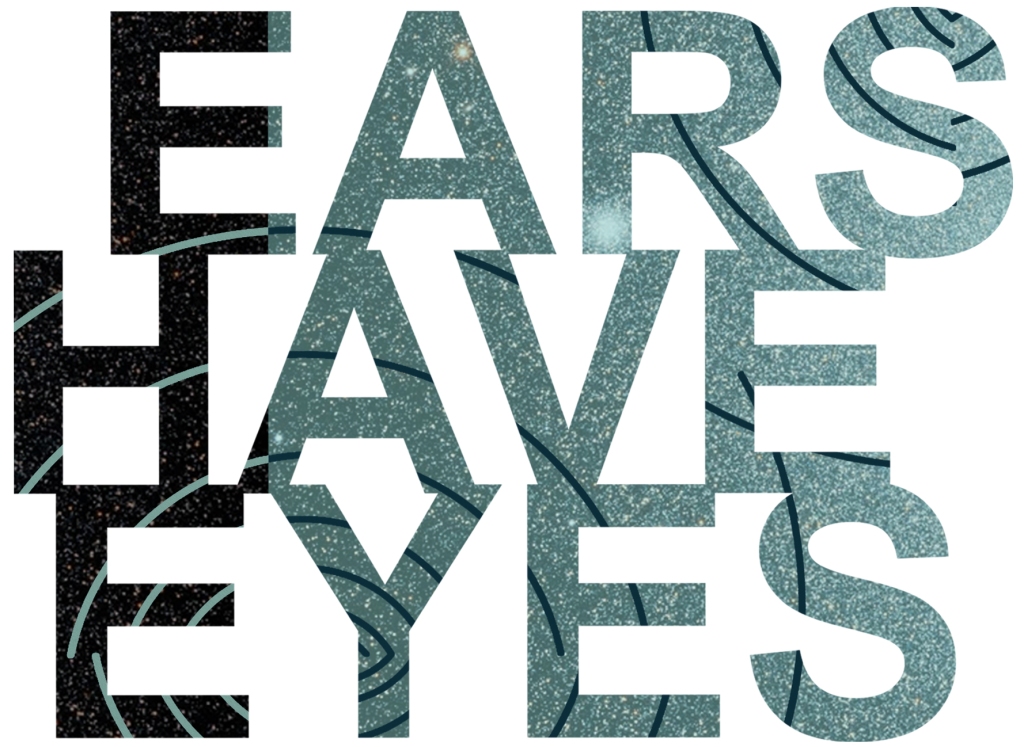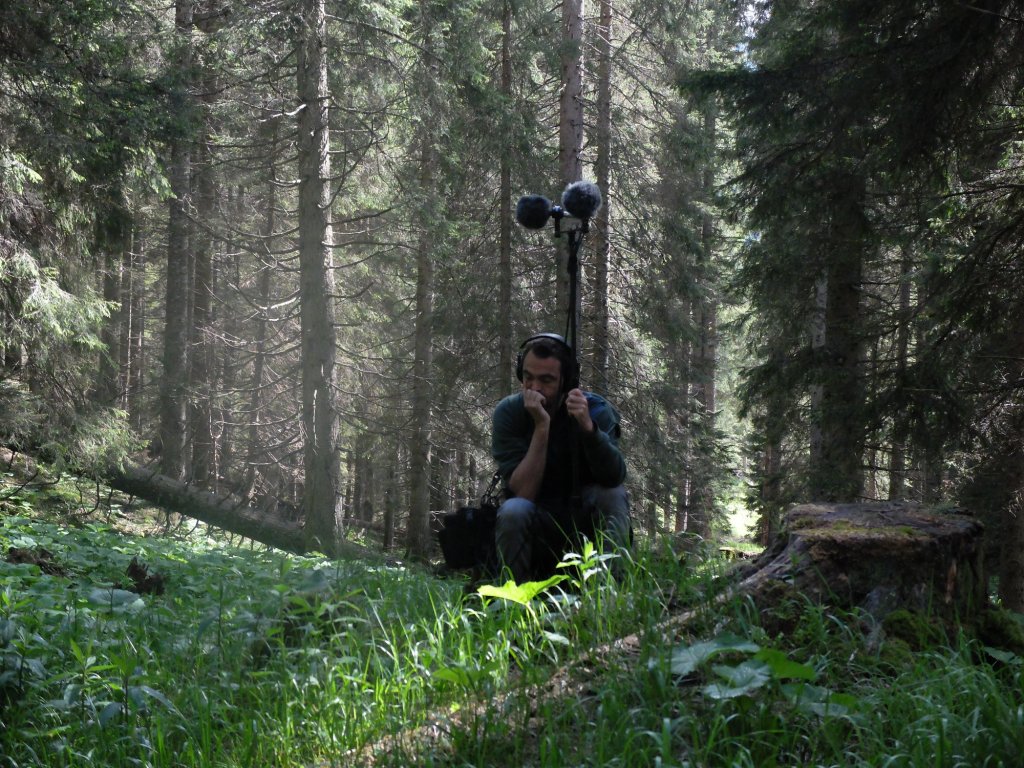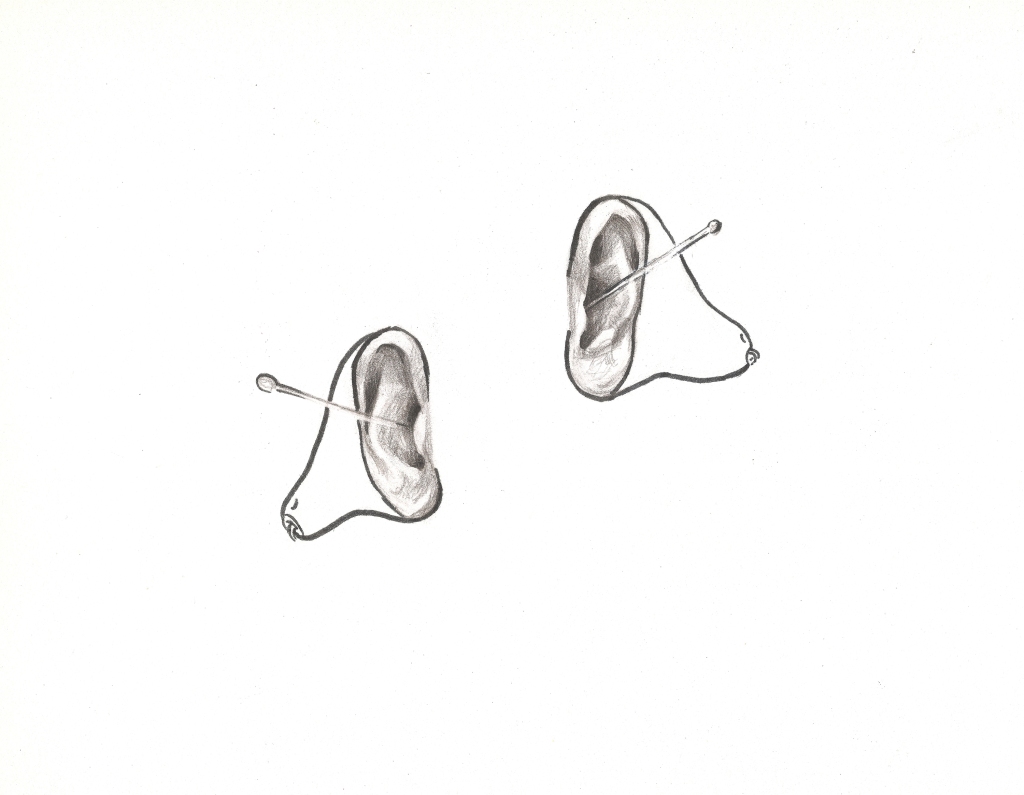
EARS HAVE EYES // Episode 16
Airing Wednesday, May 10, 2023 at 8 pm MST
on CJSW 90.9 FM

RADIANT WAVES:
resonating and shiny; too bright to see
SOUND ARTISTS:
Benoit Bories
Eryk Salvaggio
Jon Middleton
Magda Lambropoulou
Ryan Pratt
Serge Bulat
Zoundskaap
Co-hosted by Wayne Garrett & Caitlind Brown, produced and edited by Caitlind Brown, supported by Kaamil Kareemi and CJSW 90.9 FM.

EARS HAVE EYES is a monthly sound art radio program airing on CJSW 90.9 FM in Calgary/Mohkinstsis. You can listen to podcasts of previous episodes here.
Invisible transmissions are moving through our bodies at all times – washing over us and our environment, emitting outwards from inside us, passing through us without our noticing, flowing back and forth in an infinite connection between ‘self’ and ‘world.’ Whether composed of water, sound, or brain activity, the waves crashing through today’s program are emotive and physical experiments, resonating brightly. Squint with your ears and tune in for an hour of RADIANT (radio) WAVES.
Thanks to the participating artists and our friends at CJSW!


Benoit Bories
Benoit Bories is a sound artist. He has produced audio documentaries and sound art pieces for France Culture, Arte radio, RTBF, RTS and Deutschland Radio Kultur. His sound art activity comes originally from the radio documentary. It has gradually transformed over time towards more hybrid productions combining forms borrowing from sound art, acousmatic composition and field recording while retaining this desire to document societal issues. Benoit Bories teaches documentary sound creation at Phonurgia Nova, Faïdos Sonore and works with several audiovisual schools.
La Foresta dei Violini is a sonic journey made of the musicality of the landscapes of the Val di Fiemme (Italy). At times, voices are heard, incorporated into the rhythm of the composition. The didactic, analytical tone is prohibited here. Words always arise to tell an anecdote, an experience evoking the sensitive link of an inhabitant of the region with their close environment via sound. Giuliano, ranger, describes his imitation of the call of the male of the white partridge, when he is in counting operation. Marcello has accompanied a number of luthiers in the region and developed a special sense of hearing in contact with the forest in order to find the best species.
Marcello: Imagine that, for friends, the trees have silence.
The infinite silence of the forest and the mountain. The one that penetrates you throughout your body.
A silence that you get by closing your eyes.
And that makes you feel every vibration of the forest.
The rustle of the wind, the murmur of a torrent. I feel like I’m entering the forest now …
A bird singing in the distance.
In this silence, you realize that the nature that surrounds you is an orchestra.
With a thousand voices, with a thousand voices …
Listen to the complete work here.

Eryk Salvaggio
Eryk Salvaggio is an artist and researcher based in Rochester, NY, whose work with artificial and non-human intelligence is intended to encourage new design paradigms for an increasingly interconnected world. His website is cyberneticforests.com, where he explores intersections of nature, culture, and technological systems through art and writing.
Music for an Eagle and Three Satellites is a composition generated by converting Satellite Drift data from the records of tracking a golden eagle. When the three tracking satellites used for GPS couldn’t locate the tracked eagle’s sensor (“too bright to see”), they estimate a radius where the eagle could be. The artist converted that radius into musical notation.
This work was included on the 2020 “The Central Memory” record Eryk released as The Organizing Committee.

Jon Middleton
Jon Middleton is a visual artist, sound artist, and performance artist working and living in Minneapolis Minnesota. Jon has been performing, exhibiting, and curating throughout the US since 2006. Jon’s creative works center around the harmonic commnication of natural patterns chanelled through the ethers, translated, and presented as impromptu performance, musical improvisations, automatic drawings and paintings, ecological installations, and community events curated with the intent of cultural exchange and evolution.
Growth Spert is from a compilation of field recordings known as Negative Ions, recorded by the artist while he hiked remote waterways that lead into the Mississippi River in the areas around Minneapolis, Minnesota. He processed these field recordings by running the sound into a Korg NTS 1 synthesiser and then mixing the original sound with the harmonics and rhythms that resulted from the digital manipulations.

Magda Lambropoulou
Magda Lambropoulou is a sculptress and sound artist. Her work engages with diverse, expressive media including audio, performance, sculpture, installations, and video. She holds a degree in Sculpture (MArt) from the Athens School of Fine Arts
Two Ears Are Not Enough is a work associated with hearing problems seeking a different empathic experience of the audience with hearing loss. Undefined everyday sounds, coming from unknown sources, can cause confusion, letting the imagination relate them with things or happenings from different sources. This piece was created for “SHAWR” Space21 Radio Art Festival in Iraqi Kurdistan and was broadcasted online on December 15th, 2020.

Ryan Pratt
Ryan Pratt has composed for NYC ensembles including Ensemble Pamplemousse, Wet Ink Ensemble, New Thread Quartet, Chartreuse String Trio, Talea Ensemble, Yarn/Wire and several soloists. His musical practice includes an improvisatory exploration of harmonic spaces derived from instrumental limitations. Ryan holds a doctorate in music composition from Columbia University where he currently teaches Music Humanities.
In Mizaru Climbs, the artist used the tuning system of a Japanese instrument called the sho as a filter to produce the composition’s harmonic and rhythmic activity. The sho, which is itself absent, tacitly functions as a means of deriving continuous and ‘always different’ harmonic and rhythmic manifestations, due to its unique pitch-availability. Here, the sonorities found within the limits of the sho imply low harmonic fundamentals, and when adjacent sonorities are combined – an acoustic ‘beating’ results.
The natural acoustic beating of these synthesized sonorities perpetuates rhythmic continuity as well as bell-like artifacts heard throughout the electronic work.

Serge Bulat
Serge Bulat is a multi-disciplinary artist, hailing from the Moldovan-Ukrainian border town. After experiments with various art forms, immigrated to US. Known for the IMA-winning LP Queuelbum, psychological installation Inkblot & the experimental game Wurroom. In recent years traveled to 13 countries, collecting signature & disappearing sounds which are the basis for his sonic experimentations.
EME(say)RGE is all about confronting internal struggle, naming it, and emerging to a new place.
The composition features Sean Ellis Hussey. The project is from the artist album, Identitudes, released on May 5, 2023.

Zoundskaap
About Zoundskaap (a.k.a. Alan Miles)
I have been a dedicated musician, sonic-explorer and academic for a number of years, with numerous commercial music and sound-art releases and collaborations.
I have a deep interest in the mathematics of music, acoustics and sound synthesis of all types.
I am interested in the notion of the ‘sculpting of sound’ and the reclamation and re-imagination of music production as an expressive and interpretative art-form, as well as music composition being a commercial commodity.
About Interpolate Between Safety & Seizure and Dante & Virgil Descend Past the Minotaur:
Suddenly, and for no known reason, I developed epilepsy. Waves that I could not see resonated in my brain causing seizures. Whilst being hospitalized I received electroencephalographic (EEG) tests, the clinical EEG technician quickly identified brainwave activity symptomatic of epilepsy, they could see them but I could not. Although I could not visually identify epilepsy activity in my own EEG test images, what I could see in them were waveforms very similar to the sound waves that I work with daily as a digital audio musician, this inspired a cathartic and creative Research Master’s sonification project. I could not record my own epilepsy seizures in real-time for sonification, but I was able to access a clinical database of EEG epilepsy brainwave recordings as part of my research. I converted them into digital sound waves and transposed them into the human hearing range using ‘sound’ digital music methods and mathematical models. I developed a Granular Synthesiser, using MAX/MSP which could then ‘play’ the EEG recordings, to create ‘sound-and-wave-scapes’ from real epilepsy brainwave events. I also created a musification of the first ever human EEG recording obtained by Hans Berger in 1924. Using the upper tracing of the actual EEG brainwaves for melodic content and the lower 10 Hz timing signal as a ‘bassline’, I overlayed the recorded EEG image from 1924 onto musical staves and traced the peaks and troughs of the EEG signal onto the musical staves to musify the results using the sonified EEG recordings, calling it ‘The Esoteric Voyage of Hans, Nikolai and Zedel (1924)’ During the development of this work I was interviewed by the BBC (British Broadcasting Company), who showed an interest in this project, they asked me what the music of a brain experiencing epilepsy sounded like? To which I replied ‘Well, it is certainly not going up the charts anytime soon!’. These sonifications and musifications have not yet been broadcast to the public and it would be fantastic to have them aired, and shared, within a creative framework and an interested artistic community.
The main methods of sound design, and instrumentation creation, were:
Granular Synthesis; where the synthesiser I created travelled and flowed through the EEG recordings creating sonic wave-scapes.
A Segmentation Process; where Hertz-based musical notes were derived from segmenting the EEG waveforms, focussing on areas in, and surrounding, the moments of epilepsy seizures in the EEG’s, and sampler-instruments created and designed with these extracted EEG segments.
A method of overlaying of EEG’s with musical staves and transcribing the peaks and troughs into melodic material. This was a singular experiment as a proof of concept, but, does provide an easy and accessible composition method for all types of musicians interested in the transcribing of waveform print-outs such as an EEG. The sampler-instruments created with the EEG segmentation and the Granular Synthesis methods and materials were also implemented in the sound design for ‘The Esoteric Voyage of Hans, Nikolai and Zedel (1924)’ composition.
There was also an artistic interpretative and allegorical approach employed throughout the work, exploring the cognitive and emotional experiences of epilepsy from a personal point of view. What is also interesting, and noticeable, is that there are similarities in the sonic content between different patients’ EEG recordings experiencing seizures; there are pure tones and quite destructive sounding sounds in the EEG brainwave recordings when transposed and processed via Granular Synthesis.

Thank you to the artists & listeners!
Special thanks to CJSW.
Want to share your sound art on future episodes of EARS HAVE EYES?
Visit this link for more information.